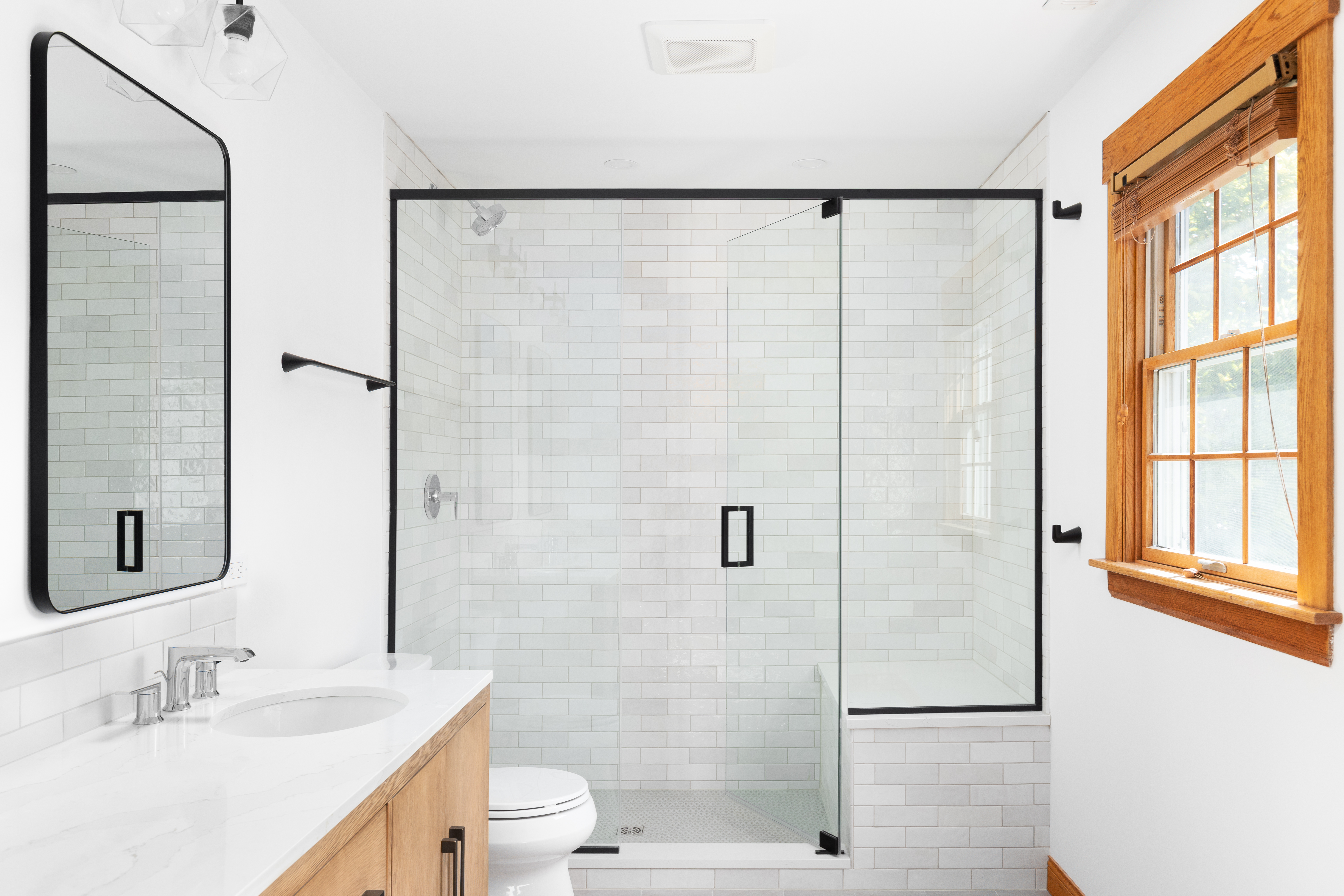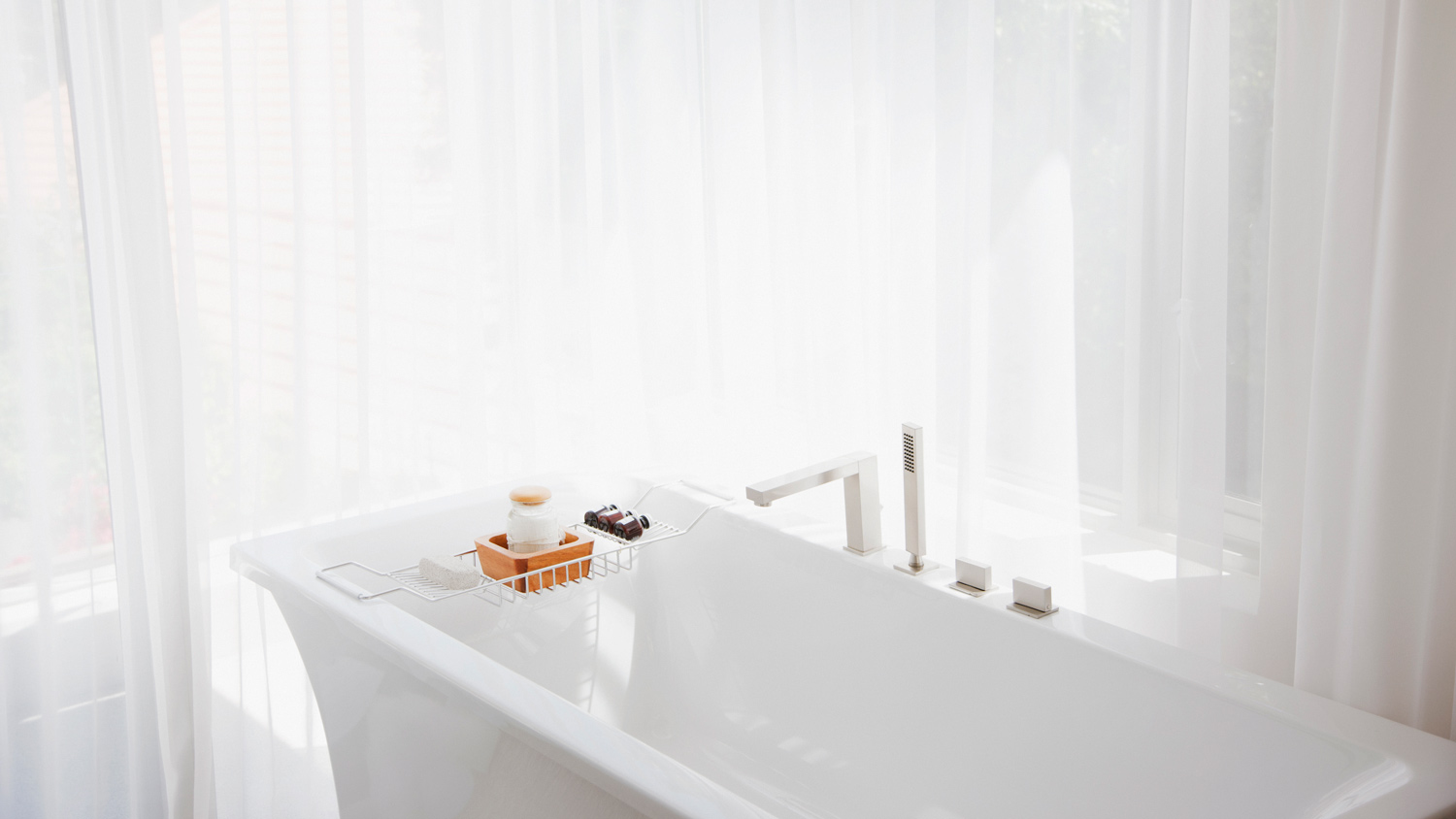
If your bathroom vanity top is damaged or cracked, removing and installing a new one can be an easy project to tackle. Learn the cost of replacing your vanity top.
Tubbing for a lifetime commitment or ready to send the bathtub down the drain


How long do bathtubs last? A bathtub can last 10 to 15 years or far longer, depending on the material and how well it's maintained. Many materials that last decades cost several thousand dollars, so you need to consider the budget next to the aesthetic you want to create. Keep reading to learn how long bathtubs last and how to extend your tub’s life.
The material of a bathtub and how well you care for it determine its longevity. The most common materials are acrylic, fiberglass, porcelain-enameled steel, porcelain-enameled cast iron, and stone.
Fiberglass: These lightweight, affordable bathtubs are popular for secondary bathrooms and last about 10 years. However, fiberglass can be more prone to bending, twisting, and scratching than other materials.
Acrylic: Acrylic tubs are made of several layers of clear plastic over fiberglass and last about 10 to 15 years. They come in various colors and retain heat better than fiberglass bathtubs.
Porcelain-enameled steel: These tubs are affordable and durable, though they are heavier and scratch easier than acrylic or fiberglass models. These bathtubs can last up to 20 years.
Porcelain-enameled cast iron: Cast iron increases the tub’s durability and, unfortunately, weight. These strong tubs can last 10 to 30 years. However, you’ll need to ensure the floor supports the weight.
Cast Polymer/Stone: Cast-polymer bathtubs are heavy but super durable. While they’re a timeless classic, they aren’t great at heat retention. Like cast iron tubs, they can last up to 30 years.
A few factors determine how long the tub lasts. Some are more influential than others, but consistent care can keep the bathtub shiny and clean for years to come.
Materials: The bathtub’s material probably plays the biggest role in its longevity, with cast iron and cast polymers offering the best durability.
Maintenance routine: Clean the bathtub’s surface, finish, or glaze with non-abrasive cleaners appropriate to its materials.
Use frequency: Pick a more durable bathtub for high-use bathrooms, saving budget-friendly models for guest bathrooms.
Over time, bathtubs can start to show wear and tear. Sometimes, the damage is obvious, and other times, it’s more subtle, so here are the signs to watch for:
Small cracks
Leaks that reappear after repairs
Stains that don’t wash away
Visible mold and mildew or mold and mildew found in walls, surround, or around faucets
An uncomfortable bathtub that doesn’t fit your lifestyle
You can extend the bathtub's life through regular care and maintenance, which can look much like the following:
Consistent cleaning with gentle, non-abrasive cleaners: Use cleaners designed for the bathtub’s material. Avoid steel wool, scouring pads, or hard-bristled brushes; use soft sponges and cloths instead.
Prevent surface damage: Well-secured shower caddies, shelves, shower storage, and bath mats on the bottom of the bathtub can prevent items from being accidentally scratched.
Rinse and wipe the tub after each use. Consider rinsing and wiping down the bathtub to keep the surface cleaner between deeper weekly cleanings.
Reduce sun exposure: If your bathroom has direct sunlight, consider blinds or shades to protect the bathtub from UV damage.
Inspect for and repair chips and cracks: Regularly inspect the tub for dents, cracks, and chips on its surface and fix them if you find them.
Polish: A soft rag or a gentle buffing pad can polish the bathtub and maintain its water-shedding properties. You can also apply car wax to high-wear areas on the sides of the bathtub. (Do not apply wax to the bottom of the bathtub.)
Refinish or reglaze: A bathtub reglazing or refinishing costs between $200 and $650, compared to several thousand to install a new bathtub.
Ensure proper bathroom ventilation: Excess moisture can lead to mold and mildew in and around the bathtub. It can also cause damage to the walls and floor supporting the tub.

Bathtub warranties vary by brand and store. Before you buy, take a look at these warranty features:
Coverage duration
Covered components
Exclusions or exceptions
Required registrations
Actions on your part that may void the warranty
Bathtub warranties may cover the cost of replacement fixtures, defective materials, and cracks or leaks unrelated to regular use. Some warranties include professional repair services, so you don’t have to find a repair person. However, beware if you’re considering a custom-made tub. They may have limited warranties or no warranties at all.
Bathtubs can be pricey, especially when replacing an expensive antique or specialty model. However, permanent stains (potential breeding grounds for bacteria), leaks that need regular repair, or if the bathtub type doesn’t work for your lifestyle are all reasons to replace rather than repair.
From average costs to expert advice, get all the answers you need to get your job done.

If your bathroom vanity top is damaged or cracked, removing and installing a new one can be an easy project to tackle. Learn the cost of replacing your vanity top.

Building a guest house is one of the largest home projects and involves several different professionals. Learn about the cost to build a guest house and where you can save.

Remodeling your bathroom can add significant value to your home. Your bathroom remodel cost in Columbus, OH will depend on size, fixtures, materials, labor, and other factors.

Replacing or installing an attic ladder provides a safe way to access your attic. Learn what factors affect attic ladder installation cost to help you budget.

If your shower door has been acting up, it’s time to get it back in working order. You can adjust a shower door with some common adjustments.

An updated bathtub can give a bathroom a whole new look. Find out how much it costs to replace a bathtub in Kansas City, MO, including prices by type and labor costs.